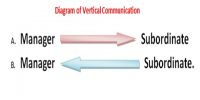Role of System Integration in Project Management
Project planning is a procedural step in project management, where required documentation is created to ensure successful project completion. It is at the heart of the project life cycle and tells everyone involved where you’re going and how you’re going to get there.
System integration is defined as the process of bringing together the component subsystems into one system and ensuring that the subsystems function together as a system. In information technology, systems integration is the process of linking together different computing systems and software applications physically or functionally, to act as a coordinated whole. The major project management integrative processes are:
- Develop the project charter.
- Develop the project management plan.
- Direct and manage project execution.
- Monitor and control project work.
- Perform integrated change control.
- Close project or phase.
The first of these processes is the development of the project charter. The project charter is usually based on the business case for the project and any project statement of work.
A major objective of System integration: System integration (sometimes called system engineering or concurrent engineering) is one part of integration management, and plays a crucial role in the performance aspect of the project. System integration is concerned with three major objectives.
These are –
Performance: Performance is what a system does. It includes system design, reliability, quality, maintainability, and reparability. Obviously, these are not separate; independent elements of the system but are highly interrelated qualities.
Effectiveness: The objective is to design the individual components of a system to achieve the desired performance. This is accomplished through the following guidelines –
- Require no component performance specifications unless necessary to meet one or more systems requirements.
- Every component requirement should be traceable to one or more system requirements.
- Design components for effective system performance, not the performance of subsystems.
Cost: Cost system integration considers cost, to be a design parameter, and costs can be accumulated in several areas. Added design cost may lead to decreased component cost, leaving performance and effectiveness otherwise unchanged.














